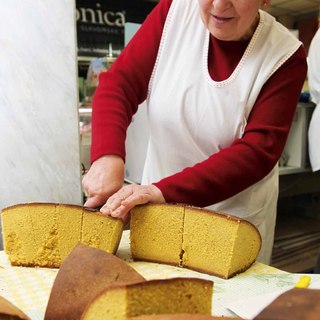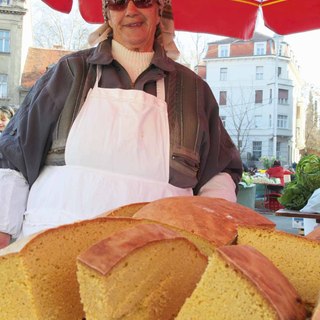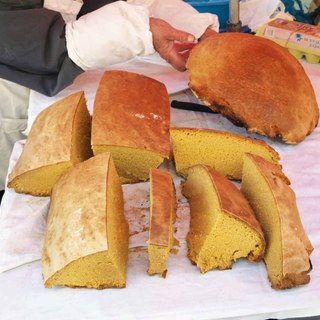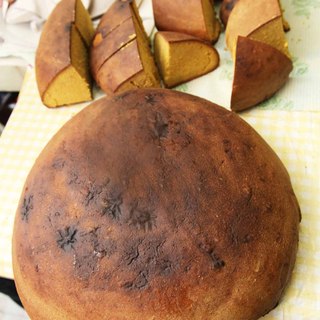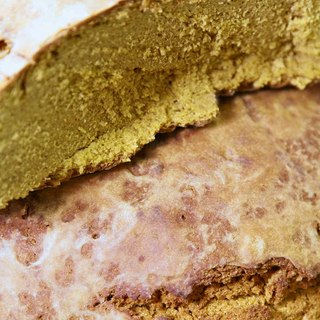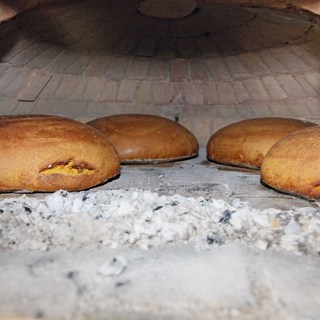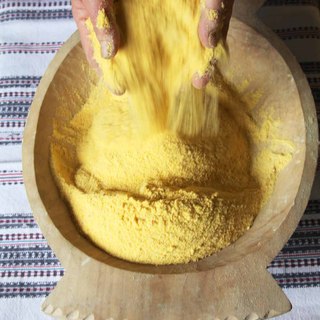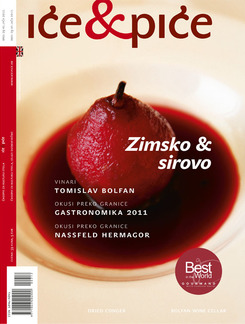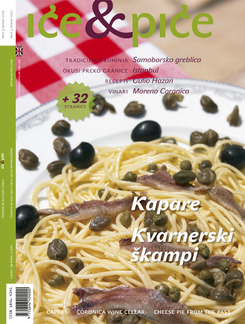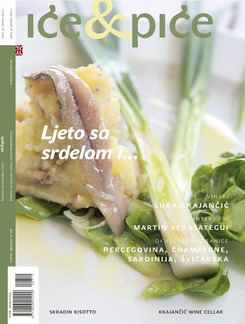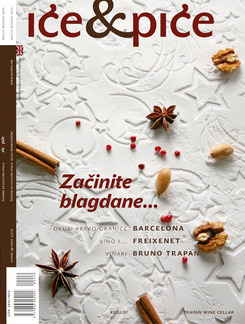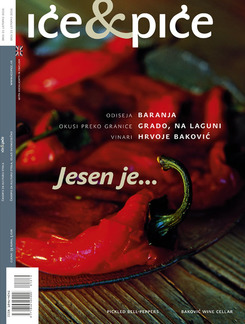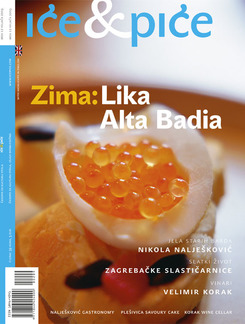The real spirit of Zagreb life doesn’t consist of blue trams and traffic jams, meetings under the clock or at Krleža. The pulse of the city is the rhythm of its marketplaces because there, more accurately than on the most precise clock, you see the passage of time, the alternation of the seasons and fashions. But seasonal diversity is not all, there’s something in tradition too. But like everything else, reliable symbols of cities breathe and change, if slowly. Hats off to monuments and nice architecture, but there’s more value for me in our market women, the dairywomen and bread bakers whom we ritually visit always at the same time, on Saturdays, Sundays or Wednesdays. Trips to the market place certainly belong among the countless little but essential rituals like drinking coffee and turning over the paltry dailies. The survival of the market women and our devotion are two parts of a remarkably pleasant game of consumption that takes place at 28 market places in Zagreb.
It’s a lucky town that’s fed by the green belt around it. If there were a bit more smartness around, instead of the empty spending sites (i.e. malls) at the edge of the city, Zagreb would have only market gardens and orchards and forests. But yet, the green zones don’t give in. The game of trust, habit, pickiness and loyalty that is played out every trip to the market is a hardy tradition that obstinately survives, in spite of all the sales and cash-free purchases. The city still hasn’t renounced the food it’s been used to buying on its markets. Soft cheese and cream, soup veg, the odd bird from under the country for Sunday lunch; unstamped eggs, honey and mushrooms, black pudding and lard. And bread, yeah! Lovely home-made bread, that there ought to be more of at the marketplace. Although we must have the greatest number bakers per capita in the world, and automatic ovens are in, bread ladies Marica, Slavica and Zuna are finding their business booming. They knead, bake and sell corn bread. They grow the corn themselves and each of them have a grind their own. The path that leads from field to table is perfectly checkable, and apparently a lot of attention is paid to this today. Own raw materials, processing, sale. A well thought out little sole trading activity, but rare enough. At the time of lamentation about lack of employment, the number of women in the civil service and enterprise, no one sees our market women, those examples of sustainable economy. They tend to bear out the idea that someone who wants to work will get by, and also, the way things are here, that work doesn’t necessarily bring wealth.
I’d rather give birth than knead bread
Friday night to Saturday morning in two houses close to Samobor the oven doesn’t go out. Summer or winter. As in the past, when bread was baked once a week, the ovens are once again glowing for the customers to have fresh cornbread the following day. Wonderful golden bread. Heavy, satiating. Sweet. A perfect counterpoint to the freshness of the quark and sour cream it usually goes with. Inimitable breakfast, which some enhance with radish, spring onion and speck. Who needs an English breakfast? This is a brilliant combo that we ought to build out national awareness on. Happy he whose bread is so sweet he needeth not cake! But was this cornbread always so? The bread lady Marica from Britanski trg tells that once the baker’s apprentice would sell fragrant white rolls and pretzels from his bike basket. The rolls were fragrant, and yet the cornbread was eaten. This peasant bread was tough, irreplaceable. Alone or with cheese, and crumbled into milk or wine if it was old. If it ran short, then it was borrowed, exactly weighed, because it had to be properly given back next baking. Neighbourly swaps or bread baking rotas made sure that fresh bread could be eaten more often. The skill of bread making was transmitted from mother to daughter like part of a dowry and the necessary education for girls. Someone who didn’t know how to make bread couldn’t get married. So I, says Marica, learned to knead bread. For 58 years, every Saturday, Marica has been coming to Britanski trg, where her bench among the dairywomen’s section is covered with a white table cloth; on it, always with the same knife, she cuts thick slices of this most tasty of all breads. Although, like Zuna, who has been selling at Dolac for more than 50 years, she was pensionable years back, she still stays faithful to her occupation and her customers. And they come from all over, from Trešnjevka and New Zagreb, from the surrounding upper class hills and the faceless new estates. No ads, no TV, papers or PR experts. If she were to bring three times as many as these dozen loaves, they would be gone before noon. For after all, for me and for others who have been buying it for years, it’s the finest in town. And the same goes for the customers of bread makers Slavica and Zuna, who sell their bread at Dolac. Slavica on Wednesdays and Saturdays, Zuna on Sundays. The youngest of them, luckily for her customers still in her prime, is Slavica, who has been selling at the market place for just thirty years; she inherited her trade from her mother-in-law, whose bench until quite recently she was using for her wares. A little female guild, they know each other, have been doing the same job for years, although it all unfolds in the grey area of customary law, because of which, I hope, the bureaucracy will bypass them a long time to come. All three of them blithely greet their customers, and admit together that baking corn bread is a nice but rather hard job. None of them complains, for the peasant never had it easy; they are proud that they are keeping up the tradition of Samobor bread makers who have been selling their loaves on the Zagreb markets for a hundred years.
There has to be bread
The bread trade at Gradec and Kaptol was a regulated business from the Middle Ages; in the lists of tradespeople of the 14th and 15th century a good many bread women were mentioned. The trade was given various old fashioned sounding names, and it seems that the women from the surrounds of the city did well enough in this profession – the only one that was forbidden to strike, as early as the 15th century. In the next two hundred years they did most of the bread trade in Gradec and Kaptol. When the guilds were banned in the mid 19th century, the period of the baking industry started, and the beginning of specialisation, in bread, or cake, or gingerbread. Bread vanished almost everywhere from the marketplaces, giving way to bakers and confectioners of the Viennese type. And then the invention of the kitchen range changed forever the ancient technology of bread ovens and the custom of baking bread once a week. The remnant of the old bread making women are found on the Zagreb markets thanks to the tradition of the villages around Samobor, of Hrastina, Frkaševec and Domaslovec in baking corn bread in the old way, and at the beginning of the 20th century, as Milan Lang writes in a book about Samobor, they were already renowned.
Twenty kilos of flour
Where the written sources usually become unclear, in the oral tradition that is usually expatiated on in the warm kitchens there is a recipe for Samobor cornbread. They don’t keep it written down on paper, but remember the skill of its making in their hands. There are no exact measurements and weights and degrees centigrade, rather, a feeling for the density of the dough and the heat of the oven. Baking cornbread is no job for the amateur, but very interesting for ethnologists, historians, anthropologists and all the gourmet tribe that go on pilgrimages to the marketplaces. Maize flour is more demanding to work with than wheaten, which rises easier, and is easier to knead. Before the dough is kneaded, in the centre of the sieved flour in the big basin, you add salt, then it’s scalded with boiling water (krop, as they say, an old word that hardly anyone knows any more). Then you leave it to rest. After two hours, you add rye flour, yeast and cold water. You knead it long enough for it to stop sticking to your hands. The lady bread maker then makes the sign of the cross over it and leaves it to rise for two hours. Before she forms the loaves, she leaves a bit of bread aside to make sour dough for the next time. When the loaves are shaped, they are brushed with a mixture of white flour and water, to give the bread a glaze. The bread is then put in a very hot oven so as to form the crust. The bread is first seared, they say, and then baked. Three hours later it is ready. Covered with a tablecloth, it will cool down for hours, and then off to market it with it, where even before sunrise, the gold, freshly sliced cornbread starts to shine out.
